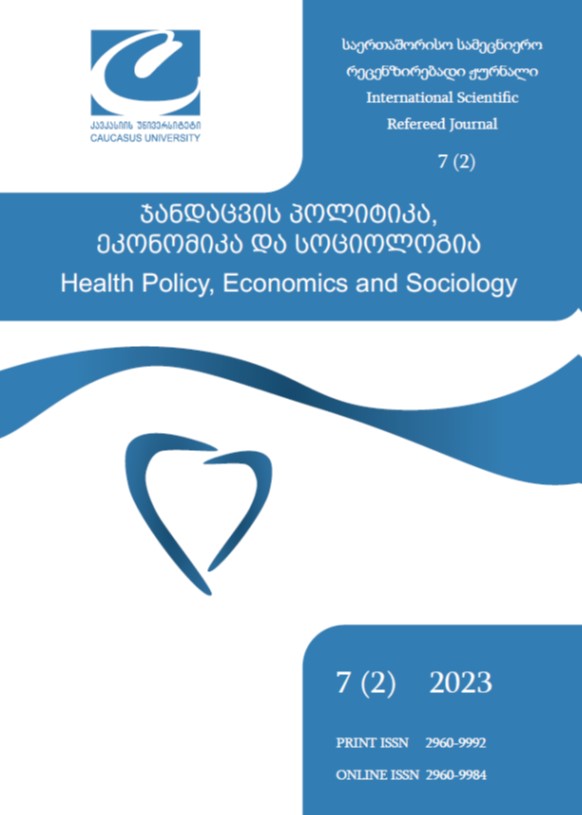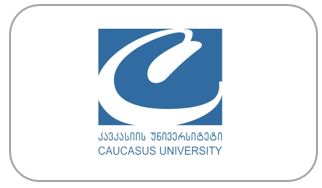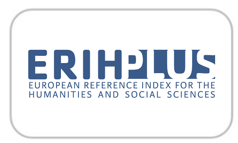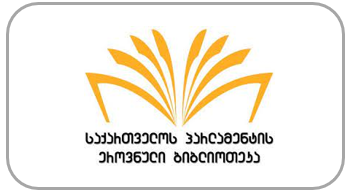რეპროდუქციული ასაკის ქალთა ჯანმრთელობის თავისებურებები ეთნიკურ უმცირესობებში
DOI:
https://doi.org/10.52340/healthecosoc.2023.07.02.03საკვანძო სიტყვები:
შობადობა, მკვდრადშობადობა, სტიგმა, აბორტი, რეპროდუქციული ჯანმრთელობა, ეთნიკური უმცირესობებიანოტაცია
შესავალი: რეპროდუქციული ასაკის ქალთა ჯანმრთელობაზე გავლენას ახდენს სოციალური დეტერმინანტები: ეკონომიკური მდგომარეობა, რელიგია, განათლება, დასაქმება, საცხოვრებელი პირობები. ეთნიკური უმცირესობების წარმომადგენელ ქალებსა და გოგონებს კი ექმნებათ დამატებითი გამოწვევები, კულტურული თავისებურებების, რელიგიის, ენობრივი ბარიერის, ეთნიკური იდენტობის, ამ იდენტობით გამოწვეული სტიგმისა თუ სხვა მრავალი მიზეზის გამო. ჩვენი კვლევის მიზანია საქართველოში მცხოვრები მცირე ეთნიკური ჯგუფების, სომეხი და აზერბაიჯანელი მოსახლეობის წარმომადგენელი ქალებისა და გოგონების სექსუალური და რეპროდუქციული ჯანმრთელობისა თავისებურებების შესწავლა, მათ ჯანმრთელობაზე მოქმედი ფაქტორების განსაზღვრა და ძირითადი საკვანძო საკითხების გამოკვეთა. მეთოდოლოგია: გამოყენებულ იქნა თვისობრივი კვლევის მეთოდი. ჩაღრმავებული ინტერვიუ ჩატარდა სომეხი და აზერბაიჯანელი მოსახლეობით მჭიდროდ დასახლებული რეგიონებში (სამცხე-ჯავახეთი და ქვემო ქართლი) დასაქმებულ ექიმებთან (გინეკოლოგი, ოჯახის ექიმი/თერაპევტი). დამუშავდა სტატისტიკური ინფორმაცია დაავადებათა კონტროლის ეროვნული ცენტრიდან და სტატისტიკის ეროვნული სამსახურიდან. შედეგები, დისკუსია: კვლევამ აჩვენა, რომ ორივე ეთნიკურ ჯგუფში ქალების მიერ საკუთარ ჯანმრთელობაზე ზრუნვა პრიორიტეტს არ წარმოადგენს, ამიტომ ხშირია ექიმთან დაგვიანებული მიმართვები, დაავადებების გამწვავებული ფორმები. ენობრივი და კულტურული ბარიერები ხშირად ნეგატიურად მოქმედებს დაავადების გამოსავალზე. ადგილი აქვს სიმპტომების, დიაგნოზის ექიმისთვის დამალვას, რაც ზოგჯერ იდენტობასთანაც არის დაკავშირებული. გვხვდება ქალის სხეულებრივი ავტონომიის უგულებელყოფა და გადაწყვეტილების მიღების პროცესში სხვა პირთა ჩარევა. დაბალია ადამიანის პაპილომა ვირუსის საწინააღმდეგო აცრაზე ინტერესი. სქესობრივი ცხოვრების დაწყების და შვილოსნობის ასაკი უმეტესად დაბალია. ვხვდებით არასრულწლოვანთა ქორწინებას, ორსულობას რაც საფრთხეს უქმნის მათი და ასევე ნაყოფის ჯანმრთელობას. მაღალია მკვდრადშობადობის მაჩვენებელი. მაღალია შობადობა და ბუნებრივი მატების კოეფიციენტი, რადგან კულტურულად წახალისებულია მრავალშვილიანი ოჯახების არსებობა. გვხვდება ნათესაური ქორწინებები, რომელიც ზრდის შთამომავლობაში რეცესიული გენეტიკური აშლილობების მემკვიდრეობით გადაცემის პროვოცირების რისკს. კონტრაცეფციის თანამედროვე მეთოდების შესახებ ცოდნა და ინფორმირებულობა დაბალია, კონდომის მიმართ არსებობს სოციალური ტაბუ და კონსერვატიული დამოკიდებულება. მაღალია ხელოვნური აბორტების რიცხვი, მათ შორის ხშირია სელექციური აბორტები. მაღალია სქესობრივი გზით გადამდები დაავადებების გავრცელება, ხოლო ამ დაავადებების შესახებ ინფორმირებულობა დაბალია. დასკვნა: რიგი სოციალურ-კულტურული ფაქტორები, უპირატესად კი, გენდერული ნორმები და სექსუალობასთან დაკავშირებული სტიგმა, ზიანს აყენებს ქალთა სექსუალურ და რეპროდუქციულ ჯანმრთელობას. არსებობს გარემოებები, რომლებიც საერთოა საქართველოში მცხოვრები ზოგადი მოსახლეობისთვის, თუმცა, გარკვეული გამოცდილებები უნიკალურია, რაც სამიზნე ჯგუფის სექსუალური და რეპროდუქციული ჯანმრთელობის დასაცავად განსხვავებული მიდგომების გამოყენების აუცილებლობაზე მიგვანიშნებს.
წყაროები
დაავადებათა კონტროლის და საზოგადოებრივი ჯანმრთელობის ეროვნული ცენტრი. (2022). 2022 წელს დაფიქსირებული დედის საშუალო ასაკი დაბადებისას დაწესებულებების მუნიციპალიტეტების მიხედვით.
დაავადებათა კონტროლის და საზოგადოებრივი ჯანმრთელობის ეროვნული ცენტრი. (2022). 2022 წელს რეგისტრირებული აბორტების რაოდენობა.
დემოკრატიისა და მმართველობის ცენტრი. (2022). ადრეული/ბავშვობის ასაკში ქორწინების საზიანო პრაქტიკა საქართველოში. გვ 36-41 https://georgia.unfpa.org/sites/default/files/pub-pdf/bavshvobis_asakshi_korcineba_angarishi_saboloo_versia.pdf
მიქელაძე, ა. (2016). მარხვა, რამაზანი. https://www.muslimgeorgia.com/rezo-aziz-mikeladze/%e1%83%9b%e1%83%90%e1%83%a0%e1%83%ae%e1%83%95%e1%83%90-3/
საქართველოს საკანონმდებლო მაცნე. (11,10,2017). საქართველოს დედათა და ახალშობილთა ჯანმრთელობის ხელშეწყობის 2017-2030 წლების ეროვნული სტრატეგიისა და მისი განხორციელების 2017-2019 წლების სამოქმედო გეგმის დამტკიცების თაობაზე. https://matsne.gov.ge/ka/document/view/3825285?publication=0
საქართველოს სახალხო დამცველი. (2019). სექსუალური და რეპროდუქციული ჯანმრთელობა და უფლებები, ეროვნული შეფასება. https://ombudsman.ge/res/docs/2019072913513745197.pdf
საქართველოს სტატისტიკის ეროვნული სამსახური. (2014). მოსახლეობის განაწილება რეგიონებისა და ეროვნებების/ეთნიკური წარმომავლობის მიხედვით. Retrieved from მოსახლეობის 2014 წლის საყოველთაო აღწერის შედეგები: https://www.geostat.ge/ka/modules/categories/739/demografiuli-da-sotsialuri-makhasiateblebi
საქართველოს სტატისტიკის ეროვნული სამსახური. (2022). დედათა გარდაცვალების რიცხოვნობა რეგიონების მიხედვით. მოსახლეობა და დემოგრაფია: https://www.geostat.ge/ka/modules/categories/320/gardatsvaleba
საქართველოს სტატისტიკის ეროვნული სამსახური. (2022). მოსახლეობა და დემოგრაფია. ბუნებრივი მატება რეგიონების და თვითმმართველი ერთეულების მიხედვით: https://www.geostat.ge/ka/modules/categories/321/bunebrivi-mateba
საქართველოს სტატისტიკის ეროვნული სამსახური. (2022). მოსახლეობა და დემოგრაფია. ცოცხლად დაბადებულთა რიცხოვნობა რეგიონების და თვითმმართველი ერთეულების მიხედვით: https://www.geostat.ge/ka/modules/categories/319/dabadeba
საქართველოს სტატისტიკის ეროვნული სამსახური. (2022). მოსახლეობა და დემოგრაფია. მკვდრადშობილთა რიცხოვნობა რეგიონების და თვითმმართველი ერთეულების მიხედვით: https://www.geostat.ge/ka/modules/categories/319/dabadeba
საქართველოს სტატისტიკის ეროვნული სამსახური. (2022). მოსახლეობა და დემოგრაფია, მოსახლეობის რიცხვოვნობა რეგიონების და თვითმმართველი ერთეულების მიხედვით. საქართველოს სტატისტიკის ეროვნული სამსახური: https://www.geostat.ge/ka/modules/categories/316/mosakhleoba-da-demografia
საქართველოს სტატისტიკის ეროვნული სამსახური. (2022). ცოცხლად დაბადებულთა რიცხოვნობა რეგიონების და სქესის მიხედვით. Retrieved from მოსახლეობა და დემოგრაფია: https://www.geostat.ge/ka/modules/categories/319/dabadeba
სოციალური სამართლიანობის ცენტრი. (2022). ეთნიკური უმცირესობების სოციალური და ეკონომიკური ექსკლუზია. გვ.8 https://socialjustice.org.ge/ka/products/etnikuri-umtsiresobebis-sotsialuri-da-ekonomikuri-ekskluzia
UNFPA გაეროს მოსახლეობის ფონდი. (2022). ადამიანის სექსუალობის შესახებ განათლების მიმოხილვა საქართველოში. გვ.7 Retrieved from გაეროს მოსახლეობის ფონდი: https://georgia.unfpa.org/sites/default/files/pub-pdf/sexuality_aducation._pages.pdf
UNFPA გაეროს მოსახლეობის ფონდი. (2022). საქართველოში არადომინანტი ეთნიკური ჯგუფების წარმომადგენელი ქალებისა და გოგოების სექსუალური და რეპროდუქციული ჯანმრთელობის და უფლებების კუთხით არსებული მდგომარეობის შეფასება. გვ 5-6 Retrieved from https://georgia.unfpa.org/sites/default/files/pub-pdf/2022042614550415532.pdf
WeResearch, ფრიდრიხ ებერტის ფონდი . (2021). ორმაგი დაუცველობა და უსაფრთხოება, ეთნიკურად აზერბაიჯანელ და სომეხ ქალთა შემთხვევის შესწავლა საქართველოში. გვ.2 Retrieved from https://library.fes.de/pdf-files/bueros/georgien/18830.pdf
World health organization. (2021). HRP annual report 2021. Retrieved from Sexual and Reproductive Health and Research: https://www.who.int/publications/i/item/9789240051003
World health organization. (2021). Sexual and Reproductive Health and Research (SRH). Retrieved from World health organization: https://www.who.int/teams/sexual-and-reproductive-health-and-research-(srh)
ჩამოტვირთვები
გამოქვეყნებული
როგორ უნდა ციტირება
გამოცემა
სექცია
ლიცენზია

ეს ნამუშევარი ლიცენზირებულია Creative Commons Attribution-ShareAlike 4.0 საერთაშორისო ლიცენზიით .













